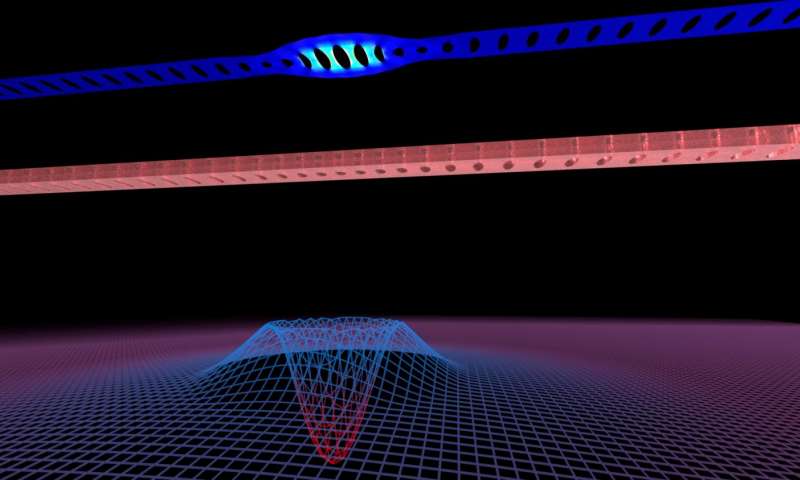
A
team of researchers with the University of Vienna in Austria and Delft
University of Technology in the Netherlands has developed a technique using
photons for controlling and measuring phonons. In their paper published in the
journal Science, the team describes their technique and suggest that their
work might have laid the groundwork toward a method to store information in a
quantum computer.
A team of researchers with the University of Vienna in Austria and Delft University of Technology in the Netherlands has developed a technique using photons for controlling and measuring phonons. In their paper published in the journal Science, the team describes their technique and suggest that their work might have laid the groundwork toward a method to store information in a quantum computer.
Phonons are waves of particles moving together through a material—like ocean waves, they propagate, leaving the particles through which they move in their original state. Prior research has shown that phonons have some behavioral characteristics that resemble particles, which is why they have been labeled quasiparticles, and also why they have been of interest in so much recent research. Scientists are interested in phonons because they may provide a bridge between the classical world and the quantum world. In this new effort, the researchers have developed a way not only to measure phonons as they propagate, but show that it is possible to control them, as well.
The technique involved firing a blue pulse of light at what they describe as a microfabricated silicon nanobeam—a form of optomechanical crystal. It was designed to vibrate in particular ways when hit by a photon. As the blue light struck the device, it created phonons. They next fired a red pulse of light at the phonons to induce a state-swap interaction. Those photons were then reflected back to a photon detector and were subsequently analyzed using Hanbury Brown and Twiss interferometry. The researchers used the state of the photons to determine the non-classical state of the phonons in the device. The team showed that individual phonons moving in a crystal follow the laws of quantum mechanics as opposed to classical physics.
The researchers point out that because of its quantum properties and the use of light, the technique offers a possible path toward using phonons as a means for storing quantum information of the type that could be needed in a quantum computer.

 Previous page
Previous page Back to top
Back to top







